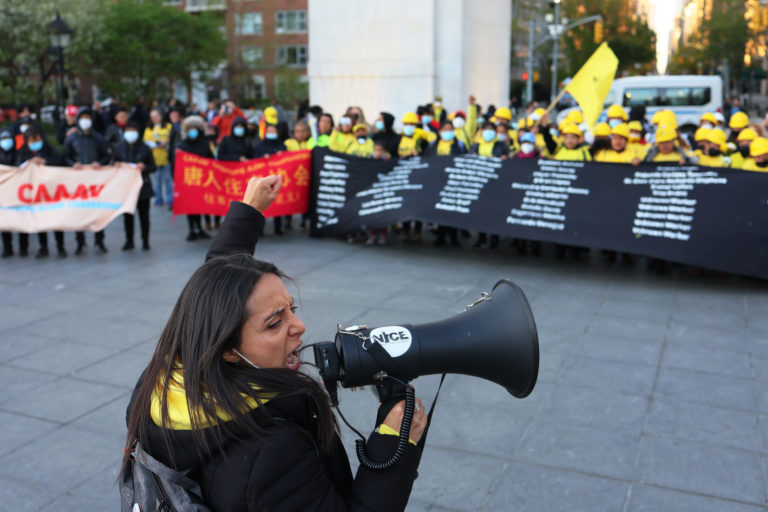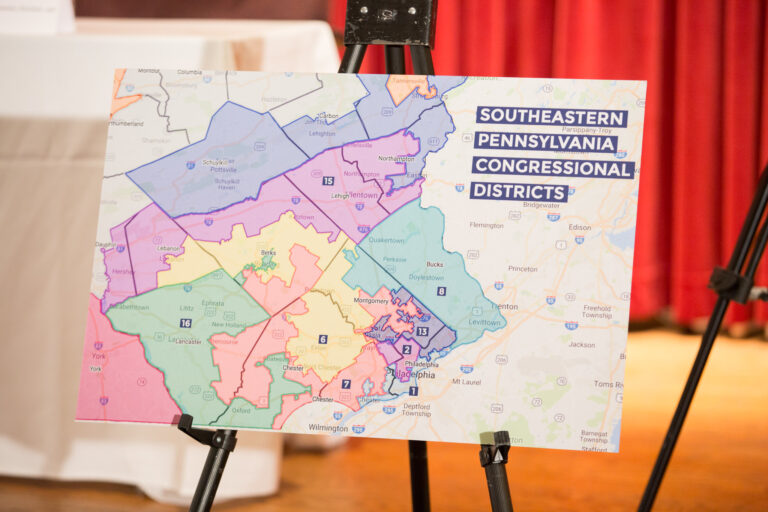Jake Rosenfeld is Associate Professor of Sociology at Washington University-St. Louis. He is the author of What Unions No Longer Do (Harvard University Press, 2014). For more on his work, see www.jakerosenfeld.net.
This post is part of a series on Labor in the Trump Years.
A presidential loss, especially an unexpected one, produces no shortage of scapegoating and second-guessing among activists and insiders of the defeated party. In this regard, the otherwise unprecedented 2016 election proved utterly normal. The emerging narrative pins the Clinton campaign’s shocking Electoral College defeat on its neglect of the white working-class, a constituency buffeted by decades of de-industrialization and declining union memberships. As evidence, adherents of this theory point to Rust Belt counties and states that flipped from blue to red between 2012 and 2016, and exit polls showing a smaller share of union households backing Hillary Clinton than Barack Obama. Journalists have had no trouble digging up disaffected white working-class voters who cast their first Republican ballot this year.
What’s remarkable is how quickly this narrative congealed into conventional wisdom. As an interpretation of what went wrong, it leads to one obvious path for Democrats to take going forward, summed up here by the Times’ David Leonhardt: “Figuring out how to win more white working-class votes, especially in the Midwest, has to be at the center of any Democratic comeback plan.”
Choosing this path would be a mistake.
The story of the 2016 race is Democrats not voting, not Donald Trump turning disaffected white working-class Democrats into Republicans. And conjoining white working-class voters with organized labor presents an inaccurate portrayal of the contemporary labor movement. These issues matter, because they point to different paths forward for Democrats and organized labor to take.
Wisconsin and Michigan are ground zero for the white working-class thesis: formerly Democratic strongholds, and former anchors of the U.S. labor movement, which flipped to the Republicans. Donald Trump won Wisconsin by a little over 27,000 votes. In Milwaukee County, disproportionately working-class, disproportionately non-white, Hillary Clinton received nearly 40,000 fewer votes than Barack Obama. Did these voters switch allegiances? It’s unlikely, as the Republicans received slightly fewer votes in the county in 2016 compared to 2012. Across the state of Wisconsin, the Trump “surge” netted him just over 700 more votes than that champion of the common man, Mitt Romney, out of nearly 3 million cast.
Michigan provides an even starker example of the Clinton team’s failure to hold the Obama coalition together. In Wayne County, which includes Detroit, the Democrats netted nearly 80,000 fewer votes in 2016 than 2012. Hillary Clinton lost the state of Michigan by just under 12,000 votes. One can look and find examples of exurban white working-class voters who turned out for Trump after voting for Obama. Some of them may be current union members, or may have grown up in a union household. Or one can ask what happened to the tens of thousands of actual Democrats – union members among them – who failed to turn out on Election Day.
And disproportionately non-white urban areas that are reliably Democratic happen to be where organized labor was recently quite strong. The election postmortems paint a picture of the U.S. labor movement as a set of beleaguered organizations made up of white, male, manufacturing workers. That would have been an accurate representation of organized labor a century ago. More recently, the demographic and occupational composition of organized labor changed dramatically, bringing millions of women and racial and ethnic minorities into its ranks. During the latter half of the 20th Century no population was more over-represented in labor unions than African-Americans. In the Detroit metropolitan area three decades ago, unions had organized nearly 1 out of every 3 workers; by 2015, the rate had fallen by more than half. In the Milwaukee metro area, 1 out of every 4 workers belong to a labor union back in the mid-1980s. Today, less than 1 in 15 do.
Democrats’ newfound attention to the electoral consequences of organized labor’s plight is welcome, although several decades overdue. Alongside churches, unions remain the only set of mass-based organizations that connect working-class Americans to politics. If 2016 has taught us anything, it is that all the advanced analytics in the world can’t compensate for desiccated political organizations that engage workers biennially, at best. But looking to convince white working-class Republican voters in Sheboygan or Kenosha Counties to join the Democrats makes sense only if Democrats had turned out all their potential voters. A more fruitful way forward would be for Democrats, labor unions, and progressive allies to reinvigorate remaining unions, especially in urban areas, and to coordinate resources and activities with state and local political organizations.
Here Nevada is leading the way. Hillary Clinton took the once-red state by 2.5 percentage points. Democrat Catherine Cortez Masto retained a Senate seat vacated by Harry Reid. And Democrats reclaimed control of both chambers of the state legislature. What distinguishes Nevada from so many other states today is the combination of a robust and active state party apparatus and a powerful labor movement. These forces work in tandem to engage their members, and work all the time, not simply in the weeks leading up to national elections. Unions in Nevada have to remain vigilant and on top of their members’ concerns in order to maintain their memberships, given that Nevada is a right-to-work state.
Replicating the Nevada model should be the progressive cause going forward. Right-to-work is now a reality in more than half the states, and Republicans plan to expand this majority in short order. Nevada unions demonstrate that right-to-work does not necessarily doom labor. Nevada’s unionization rate – 14% – isn’t especially high either, proving that small densities can have outsized political impact, given the right ingredient mix. As recent contributions to OnLabor have highlighted, the best case scenario of a Trump presidency still reads like a nightmare for the national labor movement. Yet in a federated system, energizing organized labor at the state and local level can deliver short-term victories for the workers involved, while planting the seeds for longer-term political success at the national level.
Democrats are right to turn their attention to organized labor. And the economic problems faced by the white working-class are real. Solving these problems will require a progressive political resurgence, one unlikely to be delivered by white working-class votes.






Daily News & Commentary
Start your day with our roundup of the latest labor developments. See all
December 19
Labor law professors file an amici curiae and the NLRB regains quorum.
December 18
New Jersey adopts disparate impact rules; Teamsters oppose railroad merger; court pauses more shutdown layoffs.
December 17
The TSA suspends a labor union representing 47,000 officers for a second time; the Trump administration seeks to recruit over 1,000 artificial intelligence experts to the federal workforce; and the New York Times reports on the tumultuous changes that U.S. labor relations has seen over the past year.
December 16
Second Circuit affirms dismissal of former collegiate athletes’ antitrust suit; UPS will invest $120 million in truck-unloading robots; Sharon Block argues there are reasons for optimism about labor’s future.
December 15
Advocating a private right of action for the NLRA, 11th Circuit criticizes McDonnell Douglas, Congress considers amending WARN Act.
December 12
OH vetoes bill weakening child labor protections; UT repeals public-sector bargaining ban; SCOTUS takes up case on post-arbitration award jurisdiction